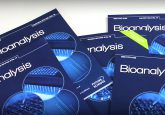Noninvasive probe developed for Staphylococcus aureus detection
University of Iowa researchers present research into a molecular imaging approach for detection and localization of Staphylococcus aureus infection.
In a recent publication in Nature Medicine, a group of researchers from the University of Iowa (IA, USA) present a novel method for Staphylococcus aureus detection. The approach is based on the activity of micrococcal nuclease – an enzyme secreted by S. aureus.
The team has developed a synthetic probe that contains both a flurophore and a quencher, which only emits light when cleaved. The probe has been optimized so that it is only cleaved by micrococcal nuclease, thus avoiding early cleavage in the bloodstream. On assessment in mice bearing S. aureus muscle infections, the probe was activated at infection sites only, demonstrating potential for this probe in bacteria detection.
Current diagnosis of S. aureus infection is a lengthy process, including biopsy and subsequent analysis. As corresponding author of the piece, James McNamara, explains, “We’ve come up with a new way to detect staph bacteria that takes less time than current diagnostic approaches.”
First author of the paper, Frank Hernandez, expands on this point, “Every year in the USA, half a million people become infected by S.aureus bacteria, and 20,000 of those who become infected die. We believe that we are significantly improving the actual methods for detecting bacteria with a simple approach, which we expect to be cheap, fast and reliable.”
Sources: A quicker, cheaper way to detect staph in the body; Hernandez FJ, Huang L, Olson ME et al. Noninvasive imaging of Staphylococcus aureus infections with a nuclease-activated probe. Nat. Med. DOI:10.1038/nm.3460 (2014) (Epub ahead of print).



